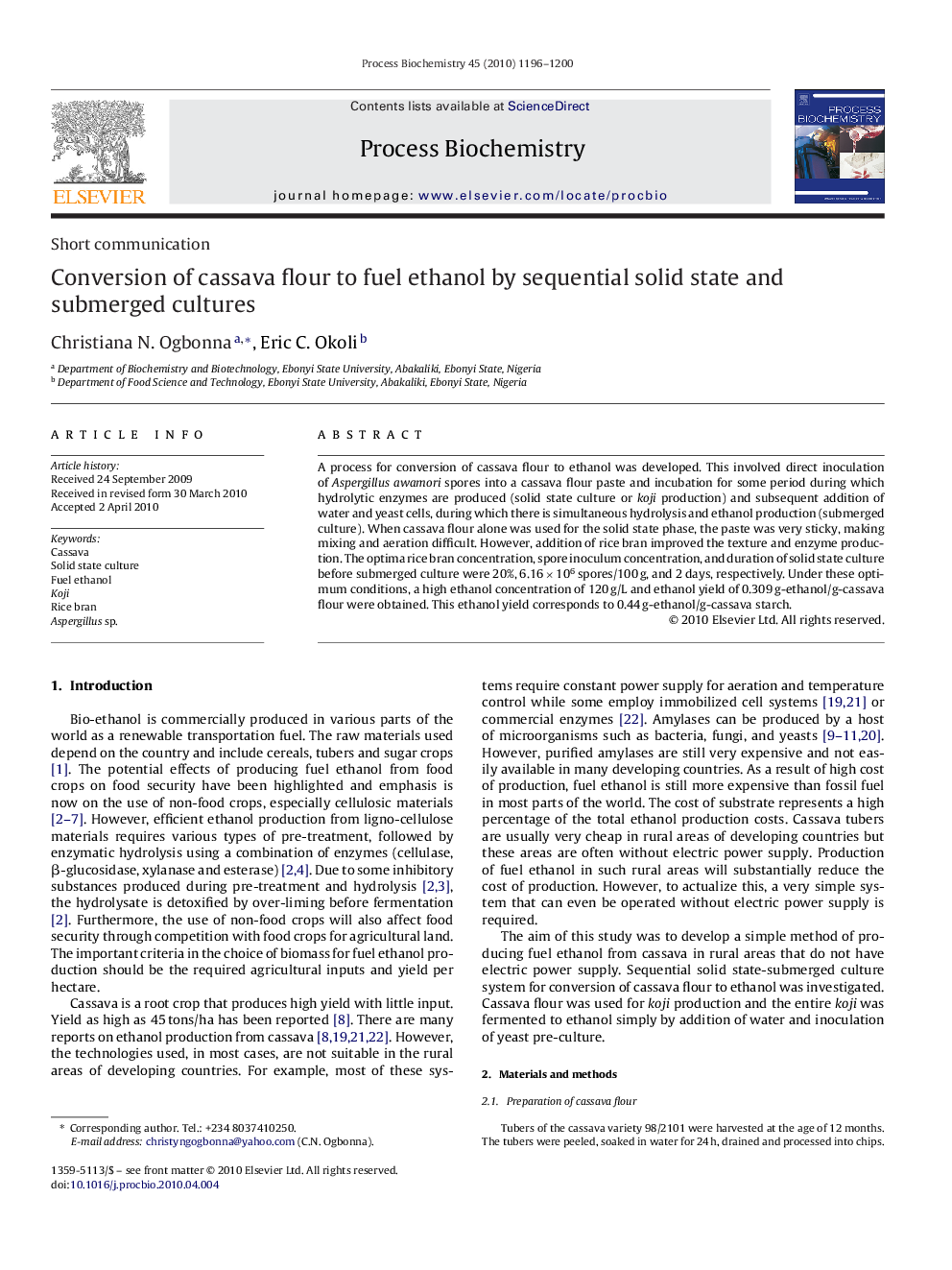| Article ID | Journal | Published Year | Pages | File Type |
|---|---|---|---|---|
| 35199 | Process Biochemistry | 2010 | 5 Pages |
A process for conversion of cassava flour to ethanol was developed. This involved direct inoculation of Aspergillus awamori spores into a cassava flour paste and incubation for some period during which hydrolytic enzymes are produced (solid state culture or koji production) and subsequent addition of water and yeast cells, during which there is simultaneous hydrolysis and ethanol production (submerged culture). When cassava flour alone was used for the solid state phase, the paste was very sticky, making mixing and aeration difficult. However, addition of rice bran improved the texture and enzyme production. The optima rice bran concentration, spore inoculum concentration, and duration of solid state culture before submerged culture were 20%, 6.16 × 106 spores/100 g, and 2 days, respectively. Under these optimum conditions, a high ethanol concentration of 120 g/L and ethanol yield of 0.309 g-ethanol/g-cassava flour were obtained. This ethanol yield corresponds to 0.44 g-ethanol/g-cassava starch.
